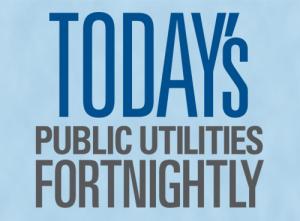On November 11, 1859, one of our industry’s greatest founders, Sam Insull, was born in London, England. Starting out as Thomas Edison’s private secretary, Insull literally created our system of regulated monopolies and cost-of-service regulation.

It was June 7, 1898. In the last six years, he had built up Chicago Edison Company as its president. Now also president of the National Electric Light Association (predecessor to today’s Edison Electric Institute), at age thirty-nine, he rose that morning to deliver the welcoming address of the NELA annual convention.
In six historic sentences, Insull outlined our industry:
“While it is not supposed to be popular to speak of exclusive franchises, it should be recognized that the best service at the lowest possible price can only be obtained, certainly in connection with the industry with which we are identified, by exclusive control of a given territory being placed in the hands of one undertaking.”
So, first, Insull proposed our system of regulated monopolies.
“In most European countries public-service operations enjoy exclusive franchises, under proper control, and are able to obtain capital for their undertakings at the lowest commercial rates, thus materially affecting the cost of their product...
In order to protect the public, exclusive franchises should be coupled with the conditions of public control, requiring all charges for services fixed by public bodies to be based on cost plus a reasonable profit. It will be found that this cost will be reduced in direct proportion to the protection afforded the industry.”
In these three sentences, Insull proposed our system of cost-of-service regulation.
“The more certain this protection is made, the lower the rate of interest and the lower the total cost of operation will be, and, consequently, the lower the price of the service to public and private users. If the conditions of our particular branch of public service are studied in places where there is a definite control, whether by commission or otherwise, it will be found that the industry is in an extremely healthy condition, and that users and taxpayers are correspondingly well served.”
And in these last two sentences, Insull makes the case that our system of regulated monopolies and cost-of-service regulation provides the public the best value.
He established the NELA Committee on Legislative Policy to press for state utility commissions. But the committee was hamstrung. The convention generally saw Insull’s proposals as too radical.
The industry, increasingly concerned about municipal takeovers of electric utilities, eventually came around. NELA established a Committee on Municipal Ownership in 1904, which became the Committee on Public Policy in 1906.
The perfect storm took place in 1907. The Committee laid out the principles of state utility commissions in a report. Then, the Panic of 1907 happened, tightening credit for everyone including municipalities.
Then, the National Civic Federation, an organization that brought together business, labor and political leaders, published detailed recommendations for state utility commissions in three volumes.
Of course, Insull was a key player in the Federation. As was John Commons of the University of Wisconsin. The distinguished economist and labor historian set down the principles for Wisconsin’s regulation of utilities.
Almost exactly eight years after Insull’s speech at the 1898 NELA convention, on July 9, 1907, Wisconsin became the first state to empower a commission to regulate the charges of public utilities. Massachusetts and New York quickly followed suit.
